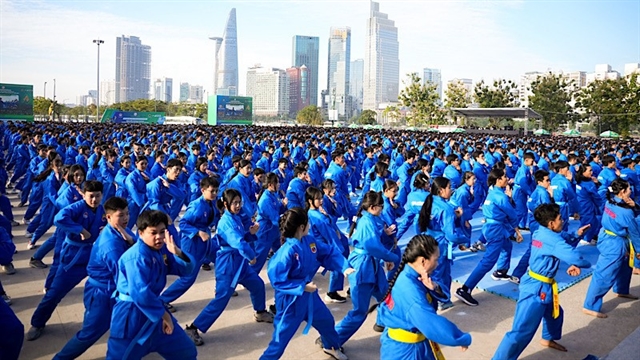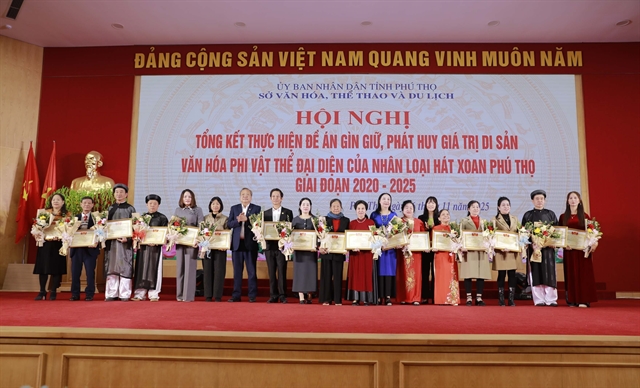 Life & Style
Life & Style
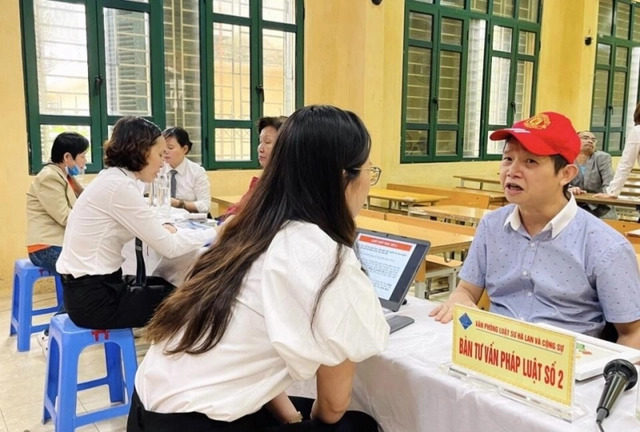
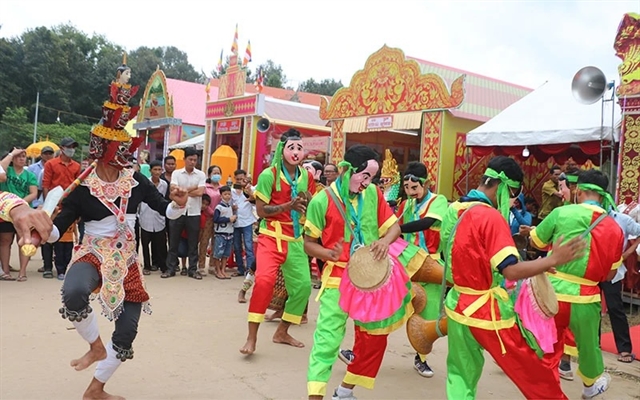
|
| The Sa Đam drum dance is a traditional cultural highlight of the Southern Khmer people. Photo nhandan.vn |
MEKONG DELTA - As April rolls in, bringing with it memories of the country’s historic milestones, the Khmer people in Southern Việt Nam, especially in Bạc Liêu, Trà Vinh, and Sóc Trăng provinces, join fellow citizens across the nation in anticipation of the 50th anniversary of the Liberation of the South and National Reunification.
For the Khmer community, this is more than just a commemoration, it is a moment to reflect on the profound transformation of their homeland.
Fifty years of transformation and growth
Fifty years after reunification, the once-remote Khmer hamlets, or phum sóc, have witnessed remarkable changes. What were once isolated, underdeveloped rural areas are now dynamic communities filled with the promise of prosperity.
The development journey of the Khmer people mirrors the larger story of Việt Nam’s post-war growth, a journey marked by strong leadership, thoughtful policy, and the resilience of the people.
Bạc Liêu, Trà Vinh, and Sóc Trăng are among the provinces with the largest Khmer populations.
In Bạc Liêu alone, over 17,000 Khmer households represent 7.6 per cent of the population. In Trà Vinh and Sóc Trăng, Khmer communities account for over 30 per cent of the local population, forming a vibrant cultural and social component of these regions.
Recognising the importance of ethnic solidarity and development, local governments have prioritised ethnic affairs as both a moral responsibility and a strategic approach to inclusive growth.
According to Phạm Văn Thiều, chairman of the Bạc Liêu People’s Committee, the province has steadily implemented policies tailored for ethnic minorities, aligning them with broader socio-economic goals.
These efforts have led to visible improvements in both the material and spiritual life of the Khmer people.
Roads, schools, healthcare centres, and cultural institutions have all been expanded and modernised.
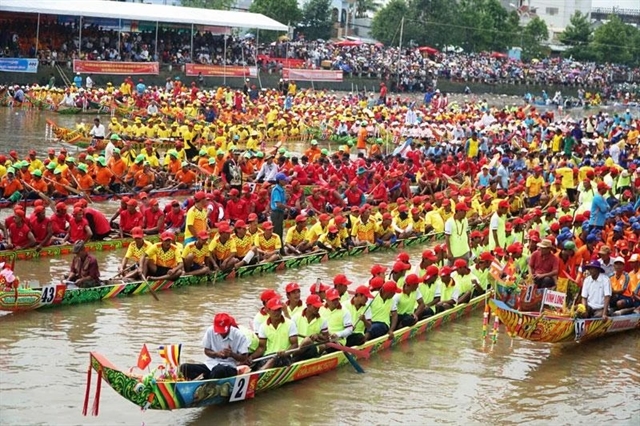
|
| Ngo boat racing is the highlight of the Southern Khmer people's Cultural, Sports, and Tourism Festival. Photo nhandan.vn |
Government support and local determination
From 2021 to 2024 alone, Bạc Liêu allocated VNĐ160 billion (US$6.3 million) toward the National Target Programne on Sustainable Poverty Reduction.
Through diversified livelihood support programmes and enhanced agricultural practices, the average income of Khmer rice-farming households increased by 20 per cent compared to 2021.
The poverty rate among ethnic minority households has also dropped significantly, from 2,329 households in 2021 to only 258 today, representing just 1.39 per cent of the Khmer population.
In Trà Vinh, similar programmes have been implemented, including microcredit initiatives, vocational training, and support for traditional crafts.
Sóc Trăng, meanwhile, has launched infrastructure projects aimed at improving rural connectivity and access to education for Khmer students. These investments have helped bridge gaps between ethnic communities and mainstream development.
Infrastructure development has played a crucial role in these changes.
Across these provinces, paved roads, stable electricity, clean water, and well-equipped schools are becoming common sights in Khmer villages.
Thirteen out of fourteen communes with significant Khmer populations in Bạc Liêu have now met all criteria for new rural status.
Annual cultural and socio-economic development plans are increasingly integrating ethnic identity, empowering local Khmer leaders and enhancing community participation.
The success of these initiatives in one province has often become a model for replication in neighbouring ones.
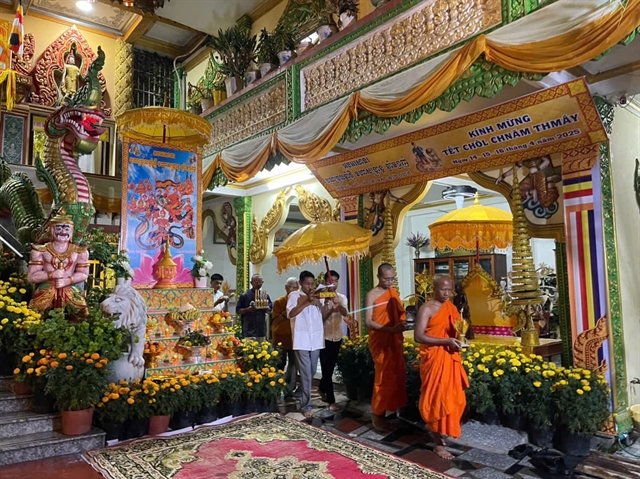
|
| The Khmer people joyfully celebrate the traditional Chôl Chnăm Thmây Festival amid the spirit of renewal. Photo baodantoc.vn |
Change seen in every village
In phum sóc across the region, change is evident in both landscape and livelihood.
Concrete roads now replace muddy trails, and electricity brightens homes that were once in the dark. Basic infrastructure, including electricity, clean water, schools, and clinics, is no longer a distant dream, but a daily reality for thousands of Khmer families.
Danh Cáo, a resident of Kos Thum Hamlet in Ninh Thạnh Lợi commune in Bạc Liêu, recalls the hardships of the past: “We used to travel by canoe; getting to school or accessing healthcare was difficult. Now, with electricity, roads, schools, and clinics in place, life has changed for the better.” His words capture the sentiment of many Khmer villagers.
In Trà Vinh’s Cầu Ngang district, where a high percentage of Khmer people reside, new schools have been built near temples to facilitate both secular and religious education.
In Sóc Trăng, local Khmer farmers are integrating modern techniques in shrimp farming and rice cultivation, increasing productivity while preserving traditional knowledge.

|
| Moon Worship Ceremony is another cultural highlight of the Southern Khmer people. Photo baodantoc.vn |
Culture preserved, spirit strengthened
Alongside economic development, cultural preservation has also been a focus.
Programmes to uphold and promote Khmer traditions, through festivals, temples, language, and education, are helping maintain a strong sense of identity within the community.
Pagodas remain not only spiritual centres but also cultural hubs, where tradition and modern life blend harmoniously.
Venerable Tăng Sa Vong, vice president of the provincial Association for Patriotic Monks and Abbot of Buppharam Pagoda in Cái Giá Chót, Bạc Liêu, expressed his joy at the province’s achievements: “Under the leadership of the Party and State, our lives have improved in every way—from politics to economy to culture.”
In Sóc Trăng and Trà Vinh, monasteries play a key role in community organisation, education, and charity.
Local monks are active in promoting environmental awareness, youth education, and social harmony.
Government policies on religious freedom and ethnic equality have empowered these institutions to become full partners in regional development.
Support for cultural institutions and Khmer education is another cornerstone of the inclusive approach.
Bilingual education and the teaching of Khmer language in primary schools have become more prevalent.
Traditional music, dance, and religious festivals are supported at both grassroots and provincial levels.
A new face for Khmer villages
Returning to Khmer villages today, one can easily see the sweeping changes.
In places like Ninh Thạnh Lợi in Bạc Liêu, Cầu Kè in Trà Vinh, and Mỹ Tú in Sóc Trăng, once known for poverty and isolation, the scene is now one of productivity and growth.
Formerly wild marshlands are now productive rice fields and shrimp farms.
Concrete roads stretch through what were once impassable paths.
Bright, spacious schools and ornately renovated pagodas add to the beauty and functionality of the landscape.
Families no longer need to send children far for education. Basic healthcare is accessible. Cultural events are celebrated with renewed vigor and participation.
The Khmer community has embraced innovation in agriculture, small business, and education.
More and more young people are pursuing higher education, returning to their roots with knowledge to share and contribute to the community's growth.
Women are stepping into leadership roles, actively shaping the economic and social development of their villages.
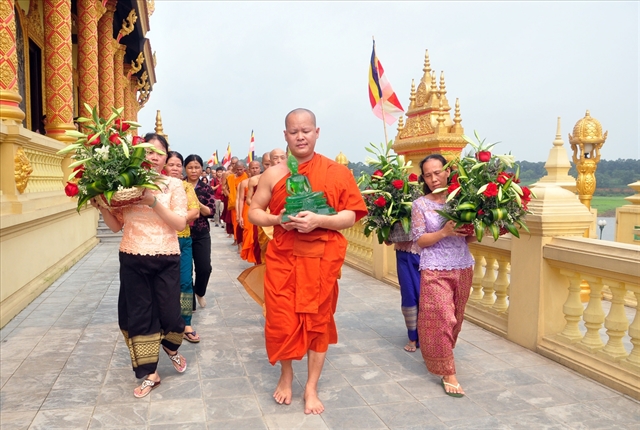
|
| The traditional culture of the Khmer ethnic community is being preserved and promoted via many festival, including the Chôl Chnăm Thmây Festival. Photo baodantoc.vn |
Looking ahead with confidence
Today, the Khmer communities in Bạc Liêu, Trà Vinh, and Sóc Trăng stand as symbols of resilience, unity, and faith in the nation’s path.
Their journey from hardship to hope is a testament to the effectiveness of inclusive development policies and the strength of grassroots efforts.
What once were war-torn, poverty-stricken villages are now vibrant communities with strong foundations for the future.
Fifty years after the Liberation of the South, the Khmer people continue to walk alongside the nation, confident in the Party’s leadership, contributing with heart and hands to the building of a prosperous, civilised, and culturally rich Việt Nam.
Their story is not just about overcoming adversity, it is about shaping a future in which tradition and progress go hand in hand.
In the blooming rice fields and rising schools, in the laughter of children and the chanting from temples, the spirit of a homeland renewed is vividly alive.
The Khmer people’s journey over the past half-century exemplifies what can be achieved when inclusive policies meet determination and unity.
With continued support and their own unwavering efforts, the Khmer communities of Southern Việt Nam will keep writing new chapters of growth, harmony, and hope—steadily advancing alongside the nation on its path of development and integration. - VNS

.jpg)
.jpg)
